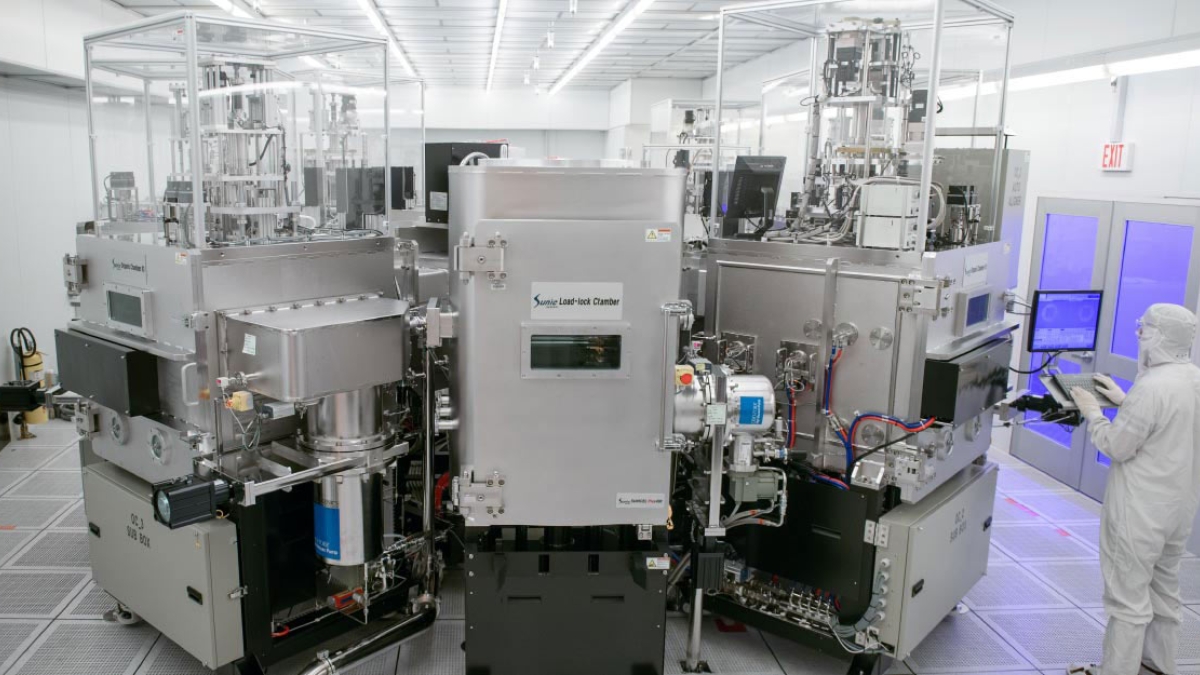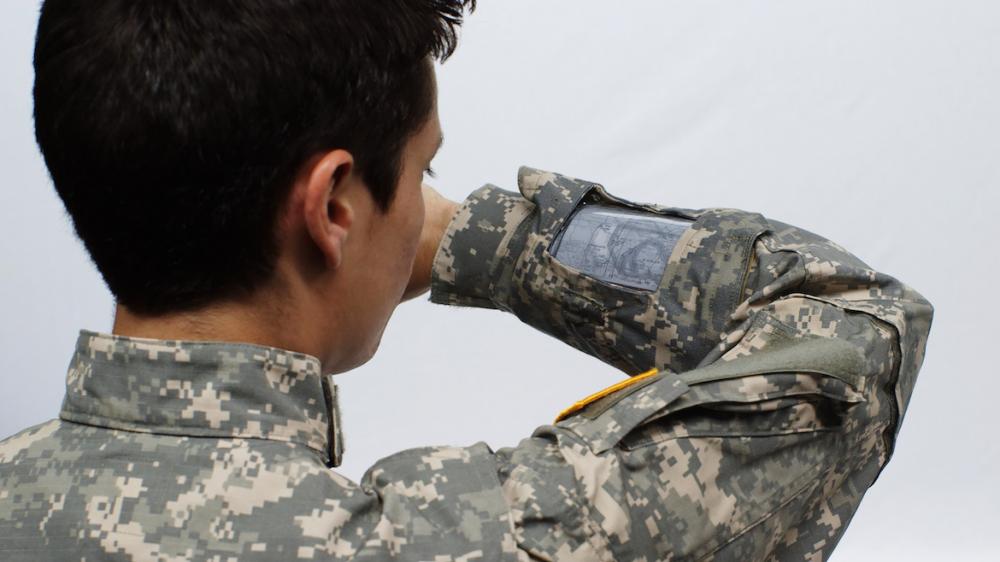Imagine a medical clinic operating in a remote foreign village. It's the only place within hundreds of miles where people can go to receive health care, and the doctors treat 40 or more patients per day. They have one X-ray machine.
Traditional X-ray detectors are made of glass. If they break, they're rendered useless and must be replaced. For isolated, low-income sites, it could be devastating.
One solution would be to build an X-ray detector that’s virtually indestructible. That is the goal of a project led by Arizona State University’s Flexible Electronics and Display Center, where researchers are building a durable, rugged and flexible X-ray detector.
The center was founded in 2004 through a partnership with the U.S. Army. Center experts collaborate with government, academia and industry to provide comprehensive flexible electronics capabilities that bridge the high-risk, resource-intensive gap between innovation and product development.
Located at the ASU Research Park, the facility offers unique manufacturing pilot lines in a Class 10 clean room. It provides an information-secure environment for process, tool and materials development and evaluation.
With a normal digital X-ray machine, even a small bump could chip the edge of the glass and shatter it.
“With our X-ray being plastic, you could bump into it all day, and it’s not going to ever break,” said Mark Strnad, associate director of the center.
That would be hugely beneficial to organizations such as Doctors Without Borders, which provides health care to thousands of people each year at rural sites in developing countries.
In addition to being durable and rugged, flexible X-ray detectors have the ability to bend and conform to a curved surface. This allows them to give a more accurate reading than current detectors, which are flat and rigid. One potential application could lie in helping companies that have long pipelines with welds or seams that must be monitored for leaks. Whether the pipes hold water, gas, oil or some other substance, having a flexible X-ray could mean catching a leak early and preventing a potentially catastrophic accident.
The Army is interested in using flexible X-ray detectors to detect bombs. The size, weight, and ruggedness of the device make it much more practical for explosive ordnance detection in military missions.
The Flexible Electronics and Display Center is also one of the only places in the United States that produces flexible displays. In 2012, researchers at the center created the world’s largest flexible full-color organic light-emitting diode (OLED), which at the time was 7.4 inches. The following year, the center staff broke their own world record, producing a 14.7-inch version of the display.
Compared to previous devices, these flexible displays are thinner and much more lightweight.
“It’s as thin as a sheet of paper. Think of a display that you could roll up and tuck away somewhere or put in places you can’t normally find displays because they’re big and heavy and bulky,” said Nick Colaneri, director of the center.
The Army is also interested in flexible displays because they are ideal for integrating into soldiers’ clothing, where they can provide real-time information to enhance safety. This was a key design feature the Army asked center researchers to consider as they built the displays.
Flexible displays have the potential to be integrated into military clothing.
“As long as displays are big, heavy, bulky and made out of glass that can break, it’s obviously not ideal for a soldier that already has 100 pounds of stuff that he or she has to carry around,” Colaneri said. “The Army funded this project because they had an interest in pushing for displays that are thin, lightweight and don’t break. They imagine more and more electronic devices that are going to allow soldiers to do their jobs or keep them safe on the battlefield.”
Building highly complex flexible displays and X-ray detectors requires expertise in many areas. That’s why the center brings together industry partners in one central hub.
“Think of it like building a car,” Strnad said. “You’ve got the engine, transmission, suspension, electronics, all these things. Everybody has a piece of it, but nobody could put it all together by themselves.” The Flexible Electronics and Display Center works with about 50 partners to make these cutting-edge technologies a reality.
Ito America Corporation is an engineering sales group that specializes in semiconductor packaging and LCD assembly. As one of the original partners of the center, Ito brought expertise, equipment and a tool set that is used for the assembly of the flexible displays.
“We’re helping out the future of soldiers in harm’s way with a way to communicate. We thought that was a noble effort,” said Tim Martinez, technical sales manager at Ito.
In addition to producing devices that could help soldiers stay safe and work more effectively, the Flexible Electronics and Display Center (FEDC) offers unprecedented hands-on experience to the next generation of engineers through its internship program.
Zachary Hartke is a junior in ASU’s School for Engineering of Matter, Transport and Energy. He is majoring in chemical engineering, minoring in materials science and is an intern at the center.
“I’ve been working on integrating new materials into the processes that we already have here,” Hartke said. He tests new chemicals and substances to see how they might work better for the products that FEDC develops, including OLEDs, X-ray detectors and electrophoretic displays.
Specifically, Hartke is finding ways to make their materials more flexible and easier to manipulate. This work allows him to apply some of the concepts he’s learning in class, as well as gain valuable professional experience.
“Before I worked here, I hadn’t done anything related to my major at all. My first job was actually at Men’s Warehouse,” Hartke said, referring to a chain of men’s clothing stores. Despite being new to the field, Hartke has been an asset to the team, according to his supervisor Emmett Howard.
“My expectations were exceeded," Howard said. "He’s done very well.”
Hartke was able to work full-time at the Flexible Electronics and Display Center for a semester through the internship program, something that was important to the center.
“In the efforts that Zachary is involved with, one day’s activity might be critical at 10 a.m., the next day it might be at 2:30 p.m. — it’s not something that can be easily scheduled,” Strnad said.
The immersion also allowed Hartke to be fully integrated into the team and become an active participant in engineering projects.
“He’s gone from sitting and listening in the meetings to actually making presentations at a couple of them,” Strnad said.
Hartke was grateful for the opportunity to work in a professional environment. He said his coworkers provided guidance and support, but also gave him the freedom to make mistakes and learn from them.
“One thing I appreciated right away is that I wasn’t really treated like a student. I was treated more as an engineer,” he said. With this experience, Hartke was able to figure out what he loves and is now better positioned to pursue his dream job in the electronics industry.
As a world-class manufacturing facility with a high level of research activity, the Flexible Electronics and Display Center is not only an asset to students seeking hands-on experience, but also to ASU as a whole.
“I think the fact that the university can provide things that potentially make a better society is a very unique opportunity,” Strnad said. “To not only do the research, but also supply some of the sub-components, gives ASU an even higher level of visibility.”
Written by Allie Nicodemo, Knowledge Enterprise Development
More Science and technology

Compact X-ray laser lab aims to reveal deep secrets of life, matter and energy
X-rays allow us to view inside the human body to diagnose broken bones and other hidden problems. More recent X-ray advances are making it possible to see events at the scale of atoms and molecules,…

Apollo lunar samples enable ASU researcher to pinpoint moon’s crystallization timeline
A team of researchers, including Arizona State University geochemist Melanie Barboni, in collaboration with scientists from The University of Chicago, have made a new discovery about the history of…

NASA launches space telescope to chart the sky and millions of galaxies
California’s Vandenberg Space Force Base was the site for Tuesday’s 8:10 p.m. launch of the NASA SPHEREx mission aboard a SpaceX Falcon 9 rocket.The SPHEREx (Spectro-Photometer for the History of the…



